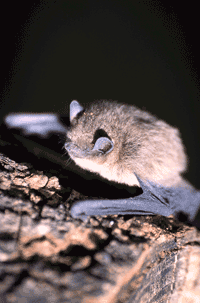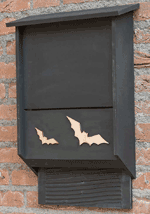As a corporate supporter of the Bat Conservation Trust, CJ Wildlife is working with the charity to raise awareness of these beautiful nocturnal mammals that are so well documented at this time of year.
The relationship between bats and Hallowe’en is thought to date back to ancient times where people used to gather around huge bonfires to ward off evil spirits? The heat from the bonfires attracted a host of flying insects which in turn attracted the bats. The silhouette of the bats from the firelight soon became a feature of the Halloween tradition.
Despite bats commonly being portrayed as vampire-like creatures in horror movies, they actually play an important role in pollination and seed dispersal and are therefore vital to preserving our environment. UK bats eat only insects! A common pipistrelle will eat up to 3,000 midges and other small insects every night although itself only weighing the same as a 20p coin! Many of our UK species are actually very small and vulnerable, and this time of the year are not beyond needing help.
Bats will be preparing for hibernation by spending increasing periods of time in a state of deep sleep, known as torpor. A bat’s body temperature lowers and its metabolic rate slows, meaning it uses less energy and can survive on the fat stored up instead of trying to forage for food. On mild nights they may still be active and venture out for food if the need arises but only under the cover of darkness.
Not all bats hibernate but those who do seek out a roost that has a constant cool and moist atmosphere, such as a cellar or cave (as preferred by the greater and lesser horseshoe bats). The end of November will mark the beginning of the long winter hibernation, and we won’t see them on the wing again until March or April.
Remember that in the UK bats are protected species under the Wildlife & Countryside Acts so should not be disturbed, especially during hibernation or breeding periods.
The UK is home to 18 species of bat, but sadly most have suffered decline in recent years with habitat loss thought to be one of the major causes. In the UK and Ireland, it’s likely that bats would roost and hibernate within most types of bat box as they need a stable, cool temperature and very high humidity to overwinter.
 The garden can be a good environment for bats when additional bat boxes are provided and suitable extra food sources offered by gardening in a way that favours them. A pond and night-scented flowers are simple ways of making a practical difference by providing valuable water and attracting their favourite insects. You should aim to Minimise light pollution. (Pictured:CJ Almodovar bat box)
The garden can be a good environment for bats when additional bat boxes are provided and suitable extra food sources offered by gardening in a way that favours them. A pond and night-scented flowers are simple ways of making a practical difference by providing valuable water and attracting their favourite insects. You should aim to Minimise light pollution. (Pictured:CJ Almodovar bat box)
Bat boxes are best sited in a sturdy tree or building where bats have been seen or are known to feed, in a sheltered spot facing south or southwest to absorb the direct daily sunlight. Position it as high as possible between 2-5m with a clear 'flight-path' for access.
Crevice roosting species are the ones best served by bat boxes as they cannot make their own roost and use bat boxes as an alternative to limited natural habitats.